Kevin and I flew into Houston Monday night. We checked into the station around 10:30 central time. After saying hello to a couple of people we remembered from the last trip, we checked our schedules for the next day and checked into our hotel.
Tuesday morning I arrived at KTRK at 8 am.
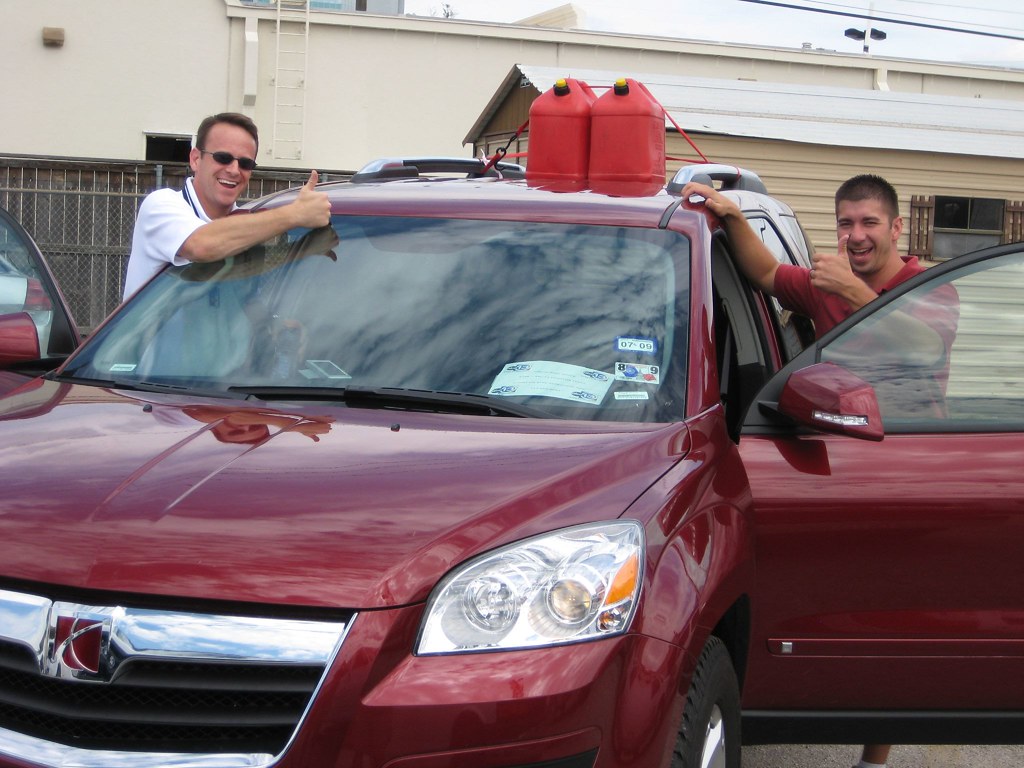 Kevin and Jeff would be working together all week. I was not assigned a reporter. My first task was to go downtown to the Morgan Chase Tower to check the progress of the cleanup in the area. The building is the tallest in the city and a number of its windows were knocked out during the hurricane. There was still very little power in the city, with most of the traffic lights being out they were now four-way stops. Adding to the difficulty were the police roadblocks. Entire city blocks were shut down so that heavy machinery could come in and clear the glass and debris. I talked to a bartender who was back to work for the first time since the storm. A lifelong Houstonian, he'd never seen the city try to recover from something like this.
Kevin and Jeff would be working together all week. I was not assigned a reporter. My first task was to go downtown to the Morgan Chase Tower to check the progress of the cleanup in the area. The building is the tallest in the city and a number of its windows were knocked out during the hurricane. There was still very little power in the city, with most of the traffic lights being out they were now four-way stops. Adding to the difficulty were the police roadblocks. Entire city blocks were shut down so that heavy machinery could come in and clear the glass and debris. I talked to a bartender who was back to work for the first time since the storm. A lifelong Houstonian, he'd never seen the city try to recover from something like this.My next job for the station was chauffeur. KTRK had stationed a crew out on the Bolivar Peninsula, an area that took a direct hit from Ike. My job was to run a satellite truck operator out to the live location to relieve the operator who'd been stationed there for 48 hours. My new GPS told me the trip from Houston to the peninsula would take about an hour and a half. We left a twelve-thirty. We pulled up to the satellite truck about three-forty five. What I saw on that ride was incredible. As we headed east out I-10, we started to see the full force of this hurricane. Part of I-10 is lies very close to sea level.
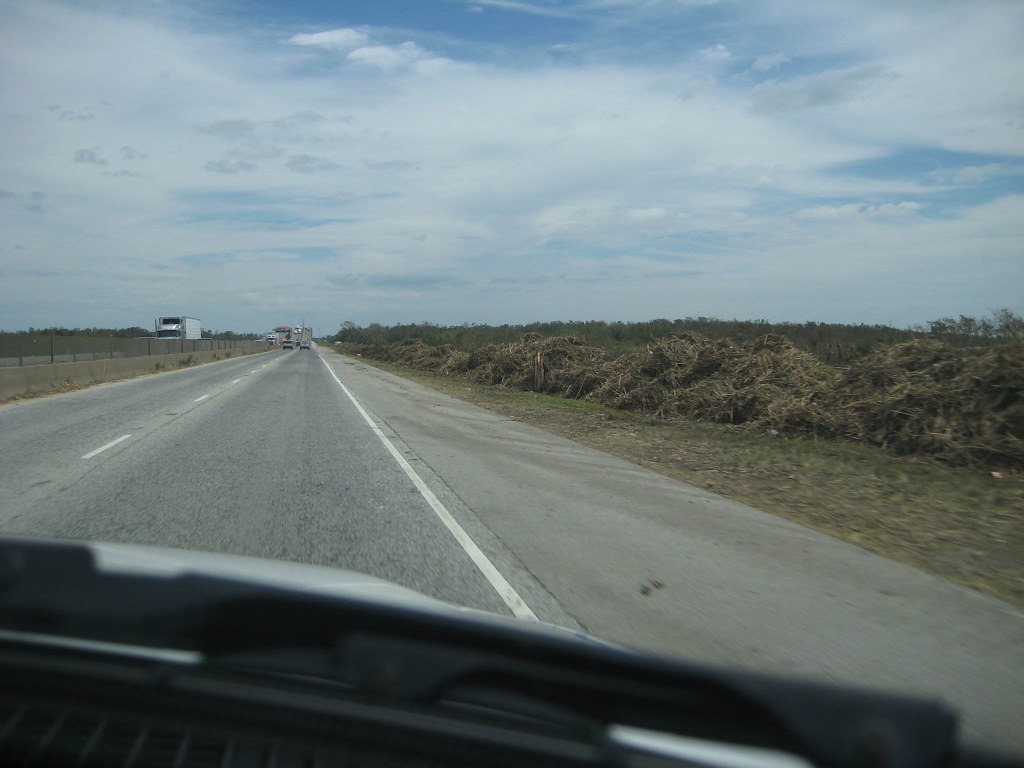 Officials had to use plow trucks to remove the debris the storm surge washed onto the highway. For a 2 mile stretch, there was a 6 foot pile of debris lined up just off the shoulder. Billboards were skeletons with the tattered banners blowing in the wind. It was difficult to know where exits were because the signs were blown off the posts.
Officials had to use plow trucks to remove the debris the storm surge washed onto the highway. For a 2 mile stretch, there was a 6 foot pile of debris lined up just off the shoulder. Billboards were skeletons with the tattered banners blowing in the wind. It was difficult to know where exits were because the signs were blown off the posts. We stopped to get toilet paper and paper towels at the one open gas station we passed along the way.

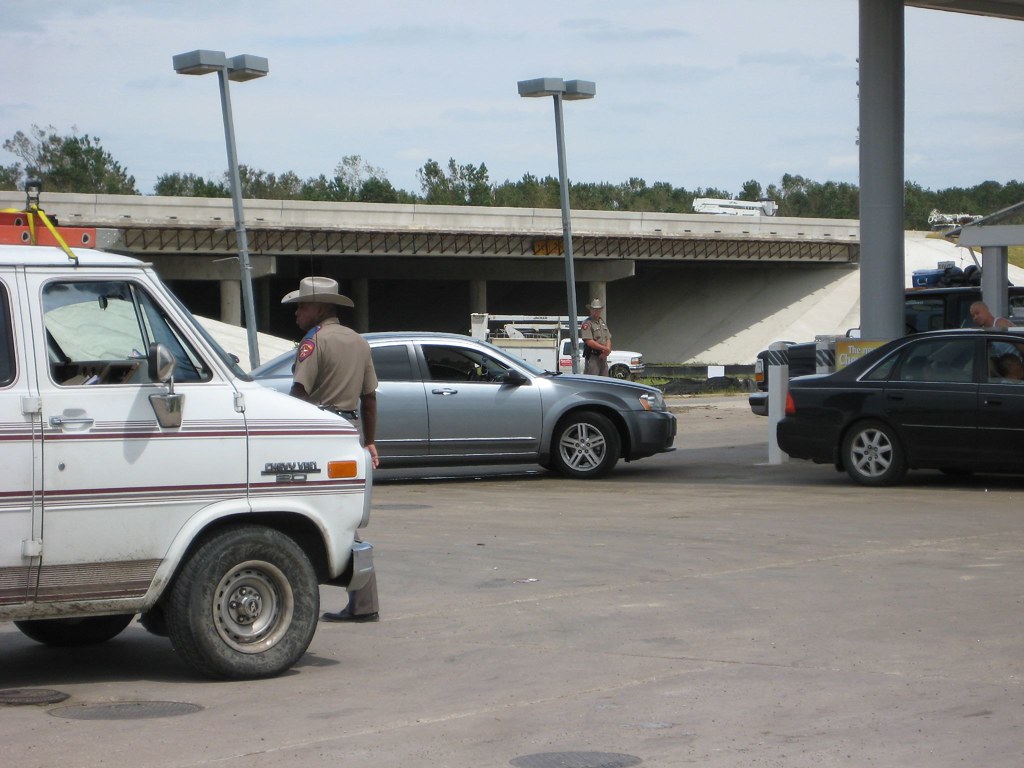 Several state troopers were directing traffic to the pumps and the line was hundreds of yards long.
Several state troopers were directing traffic to the pumps and the line was hundreds of yards long. Next to the gas station there used to be a farm stand that sold vegetables.
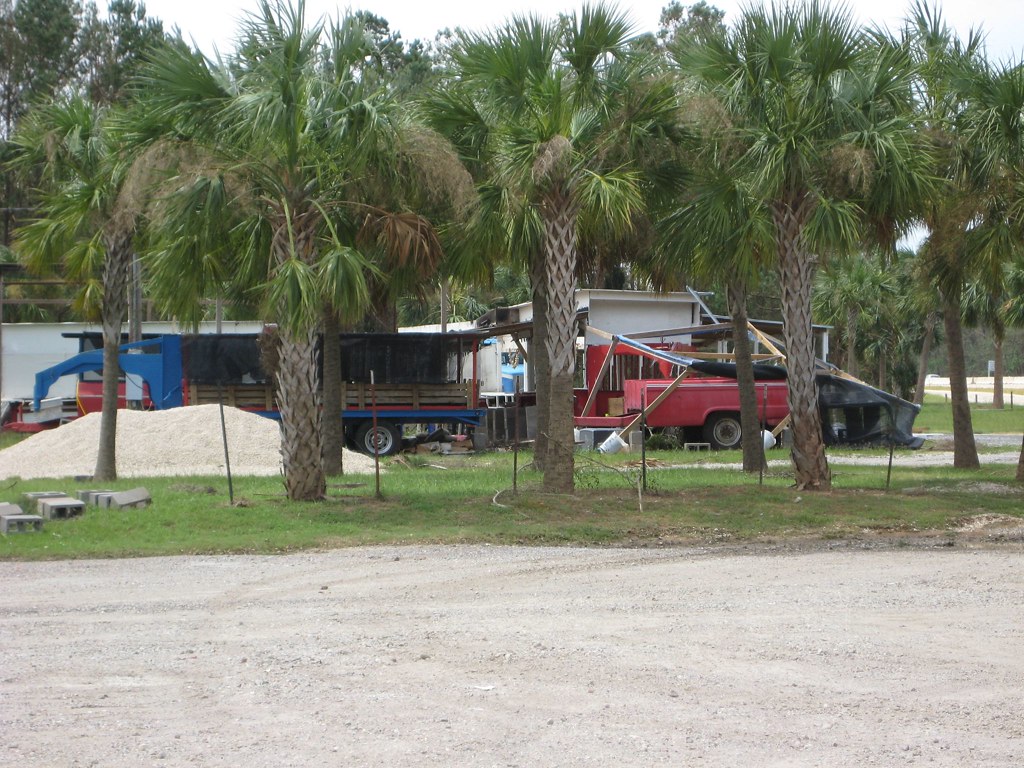
 Ike's winds damaged the stand pretty badly.
Ike's winds damaged the stand pretty badly.When we got to Route 61 we headed south, and that's where I started to realize the force that this hurricane had. Heading down HWY 61 was like driving through another world. I can't tell you how many times we drove over power lines that were strewn across the road, I quit counting at 25. Trees, huge trees were either snapped in half of ripped right from the ground in which they stood.
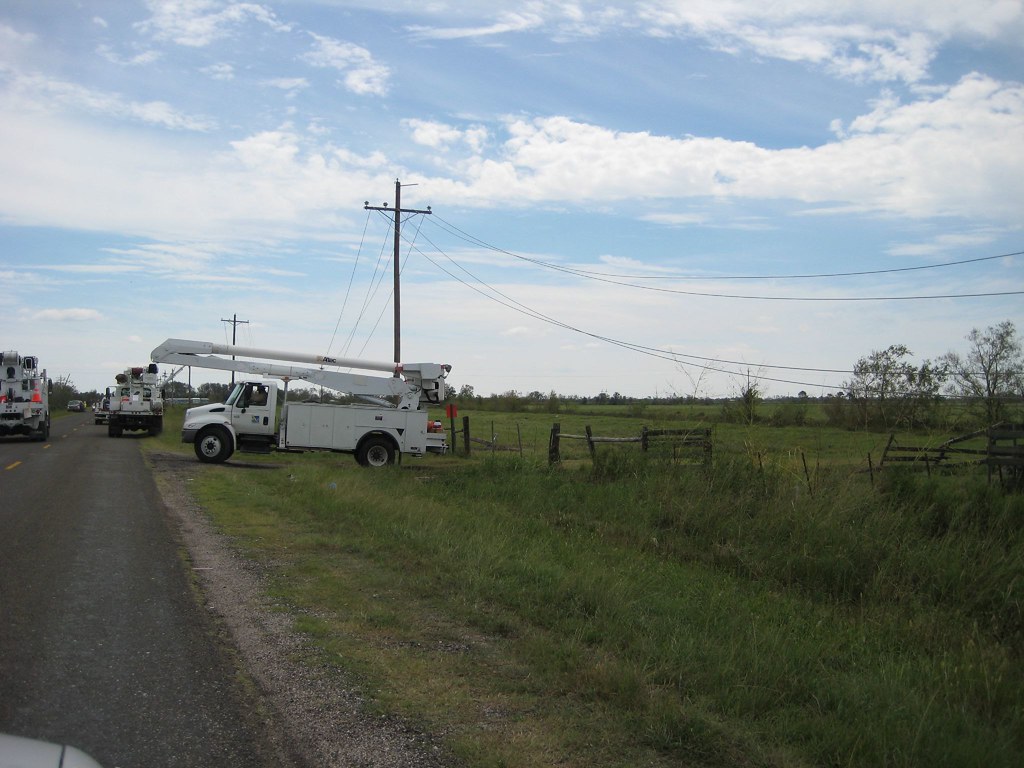

 We passed countless boom trucks that power companies from all over the country had dispatched to help with the recovery. Rarely did we see a telephone pole that was not leaning, on its side or snapped in half by Ike's winds. At a police checkpoint, a Texas state trooper needed to see identification for us to travel through. Last he'd heard, the road we'd planned to travel was under water, but we could continue at our own risk. After the checkpoint, our journey took us through a marshy, pasture mix of Chambers County.
We passed countless boom trucks that power companies from all over the country had dispatched to help with the recovery. Rarely did we see a telephone pole that was not leaning, on its side or snapped in half by Ike's winds. At a police checkpoint, a Texas state trooper needed to see identification for us to travel through. Last he'd heard, the road we'd planned to travel was under water, but we could continue at our own risk. After the checkpoint, our journey took us through a marshy, pasture mix of Chambers County.  Metal silos stood like crushed soda cans, a testament to the force of Ike's winds. At one point we passed what used to be a farm. The house and barns were no longer there.
Metal silos stood like crushed soda cans, a testament to the force of Ike's winds. At one point we passed what used to be a farm. The house and barns were no longer there. 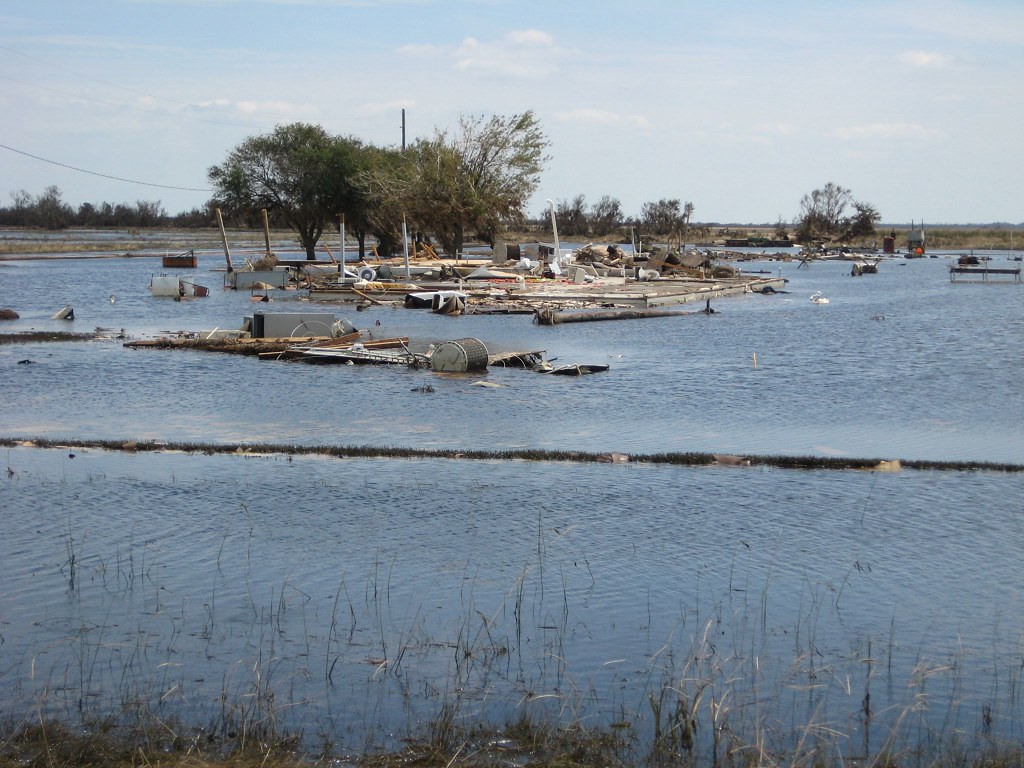
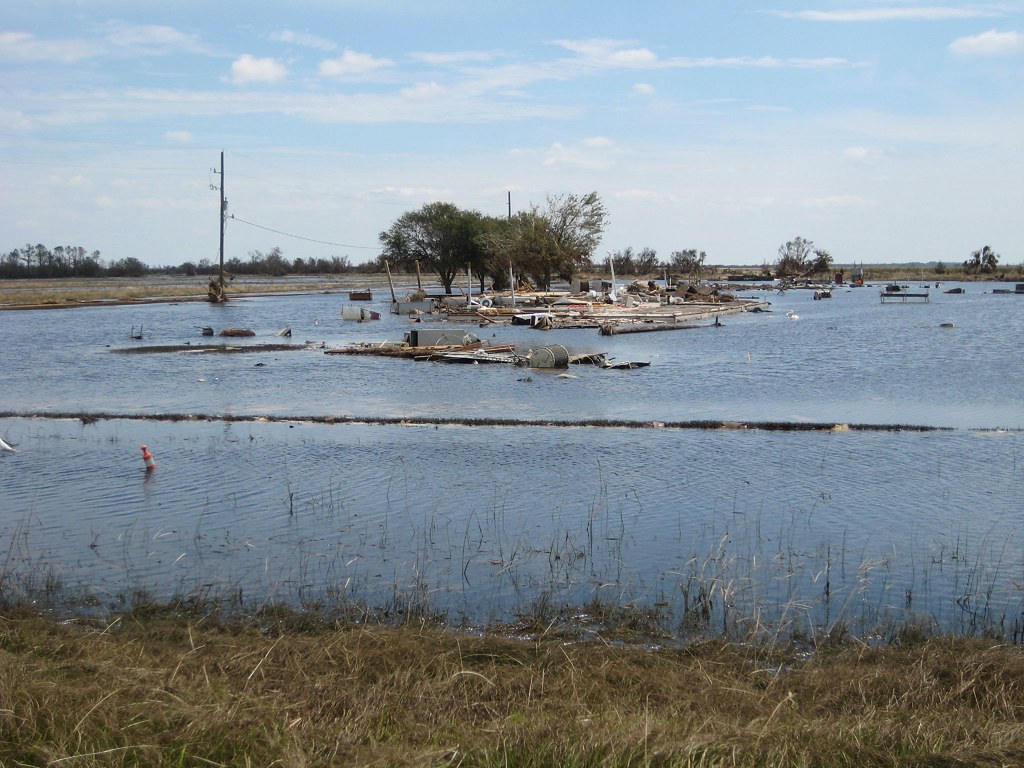
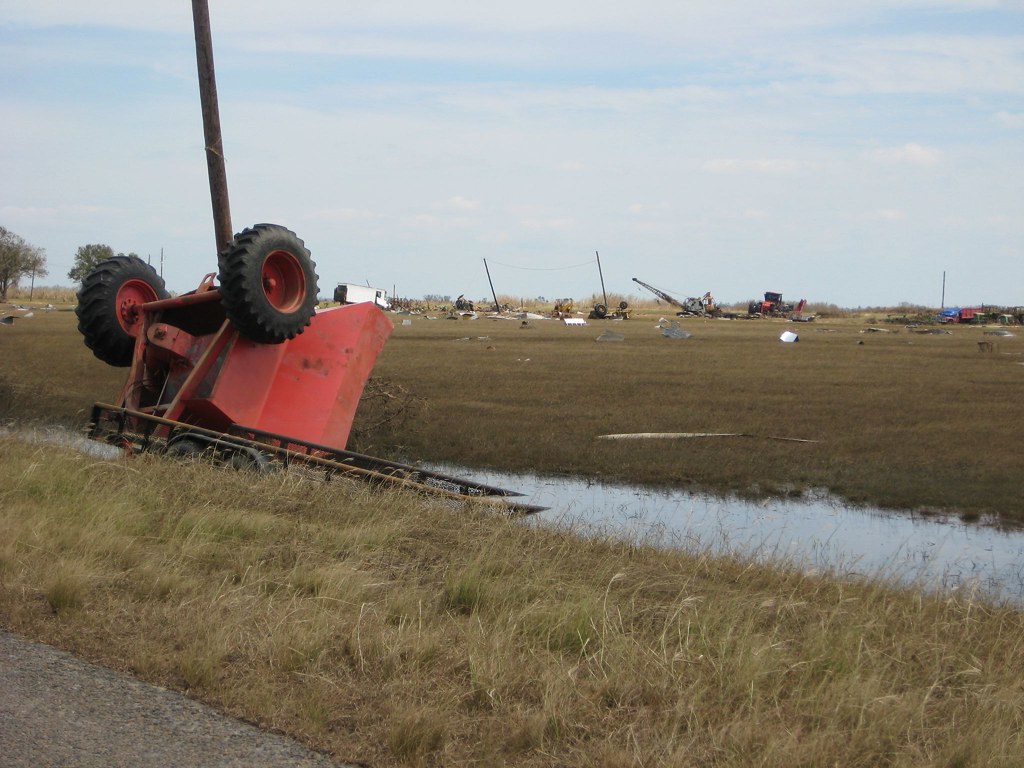
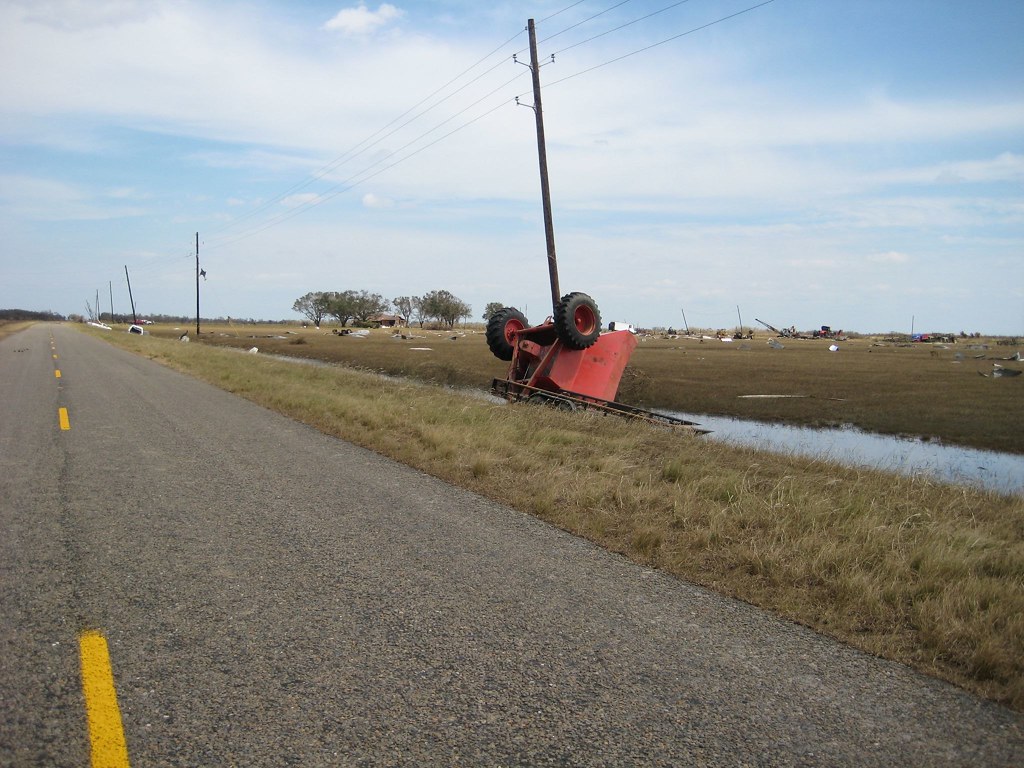 Just a couple of concrete slabs. A couple of pickup trucks and a large grain wagon were flipped over in the ditch across the street. Paul Mills, the engineer I was traveling with stopped next to a flooded shallow to show me some of the area's newest residents.
Just a couple of concrete slabs. A couple of pickup trucks and a large grain wagon were flipped over in the ditch across the street. Paul Mills, the engineer I was traveling with stopped next to a flooded shallow to show me some of the area's newest residents. 
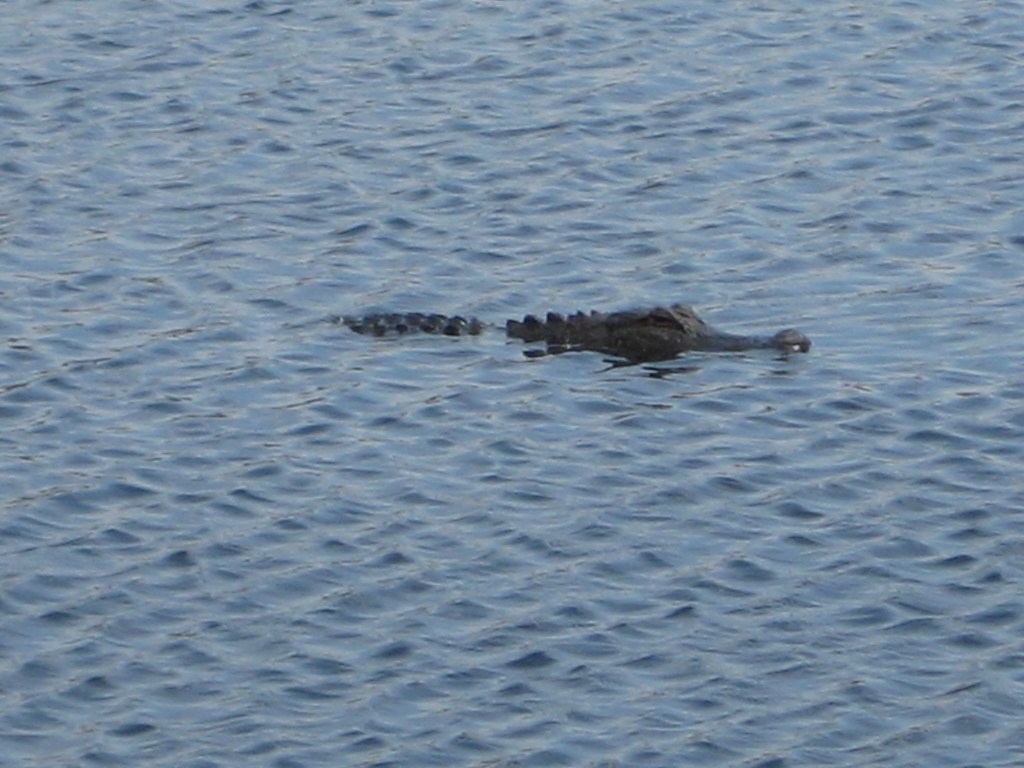
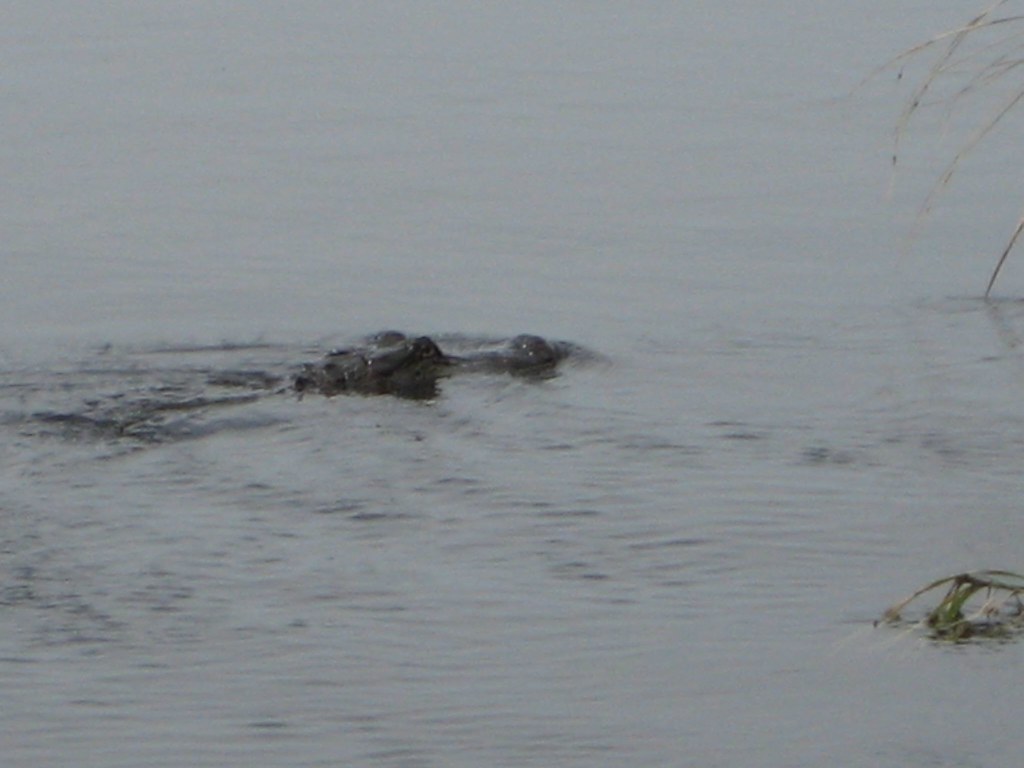
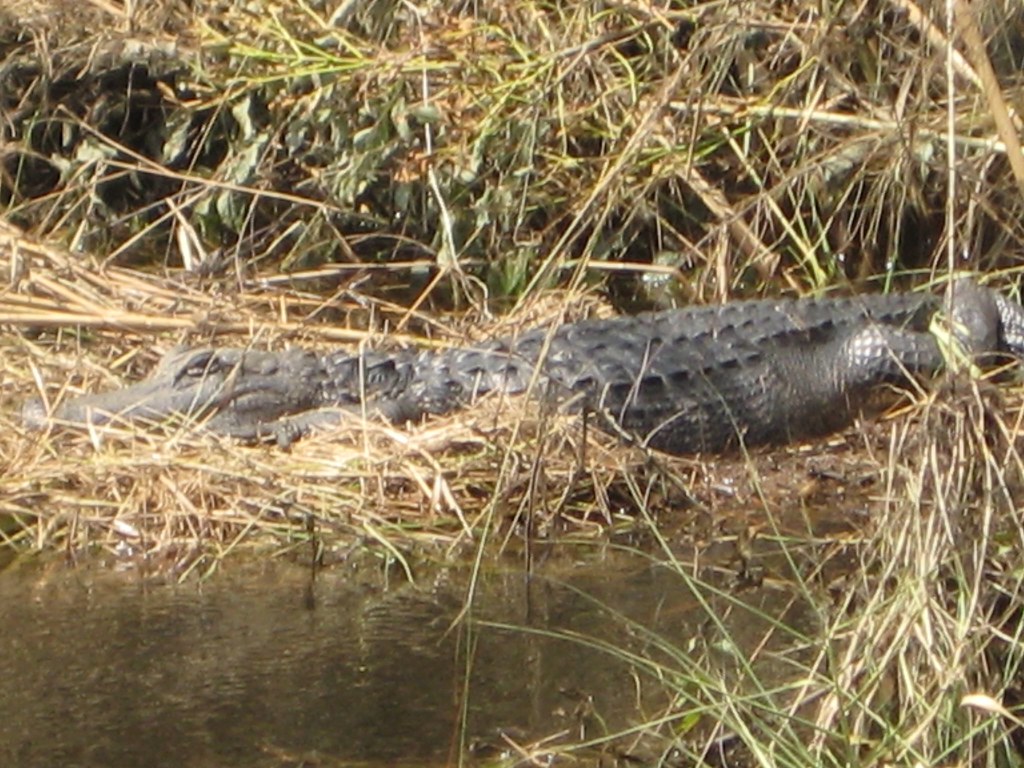
About half a dozen alligators were lounging on the banks of the water. The gators will have no shortage of food in the coming months, especially being scavengers. Fish, birds and other dead wildlife littered the road.
Eventually we came to the water in the road the officer had warned us about. We let a Texas DNR truck pass ahead of us through the water to see how deep it was. They seemed to make it through, so we cautiously proceeded to follow their path. It got a little dicey about 200 yards in when we had to make a right-hand turn, but had no idea where the road ended and where the ditch began. After clearing that we continued south to the Bolivar Peninsula. Before we could get to the town of High Island, we had to pass through another police checkpoint at the base of the intercoastal waterway bridge. Again they told us that we could pass, but we were on our own. This group of patrolmen was from El Paso. Troopers from all over the state flooded the region to keep order.
 From atop the bridge, you could see how far the marshes and pasture stretched. Because all of the land was right at sea level, it was all engulfed by the storm's surge. The above picture is facing west down the intercoastal waterway from Route 124.
From atop the bridge, you could see how far the marshes and pasture stretched. Because all of the land was right at sea level, it was all engulfed by the storm's surge. The above picture is facing west down the intercoastal waterway from Route 124.Before we actually made it to the Bolivar Peninsula proper, we passed through the small town of High Island. I few of the residents that rode out the storm were conviened outside the local gas station. The town was battered, but most of the homes were still standing. There were also some new residents in the town. As I noted, much of the land in this area is dedicated to pasture. As the surge moved in, fences were knocked down. The surviving cattle were running free.
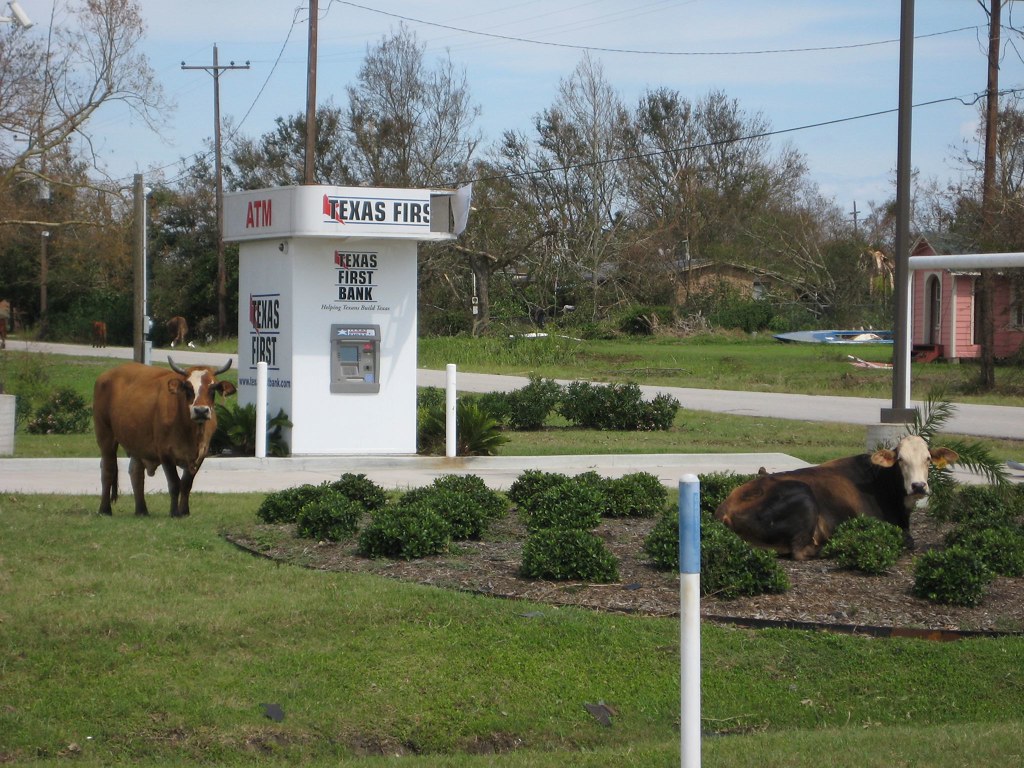 The above picture is from an ATM in the middle of town.
The above picture is from an ATM in the middle of town.The final leg of this journey was about 8 miles down the coast heading west/southwest. There were signs that the land along the road was once inhabited. We saw bed frames, lawn chairs, lots of refrigerators, but no houses. Driveways with posts and chains at the end, but no houses. Posts in the ground that served as supports for elevated houses, but no houses. It was a very erie drive. The road was basically one lane. The surge pushed enormous amounts of sand from the beach and gulf across the road. At one point the sand was so high, we had to drive off the road and through the support posts. Yes, a week earlier and we would have been driving under somebody's home. We eventually reached the SNG truck. Jaime, the operator Paul was relieving, was more than ready to get out of the area once he'd finished editing a package. The ride back was less nerve-wracking than the trip there. Knowing what was ahead we were able to head back steadily, but cautiously.
Back at the station they had one more assignment for me. The Harris County Precinct 7 Constable's station had been without power since before the storm, and the generator a generous citizen had loaned the department was about to go back to its home. Heading out to the dark section of town, I found a small area lit with construction lamps, powered by a generator. Some of the constable's deputies had been working straight through for the precinct with only the bottled water they'd bought on their own or been given by a community member. Through all of what they'd gone through, they had continued to serve and protect the citizens of their precinct to the best of their ability. I got their story to share with the rest of the community and maybe give county leaders an idea of where to focus their resources. That was my first day.
Wednesday, September 17, I headed into work at 9:00 am. I was scheduled to come in at 3:00, but with no power and not knowing anybody down there, what else was I going to do all day? Of course, they could use my help. Denise at the assignments desk paired me up with WABC reporter Carolina Leid. We were to head back out to Chambers County, not far from where I'd spent the previous day. We were told there was a small town called Double Bayou between Oak Island and Smith Point.
Heading that way we traveled east out I-10 again and again south on Route 61. We passed the same downed trees I'd seen the day before, but there was also progress on the power lines. Turning off of 61, the familiar sights continued. Much of the land that is Double Bayou is at sea level and though we were miles from the shoreline, you could see where the water had risen because the fences, trees and bushes alongside the road had a debris line all through them. Much of the debris looked like seaweed, but there were also pieces of tarps, curtains and clothing. It was hard to tell that some of the fences left standing were even fences, because the seaweed was so thick and tangled in them they looked like bushes or solid debris piles.

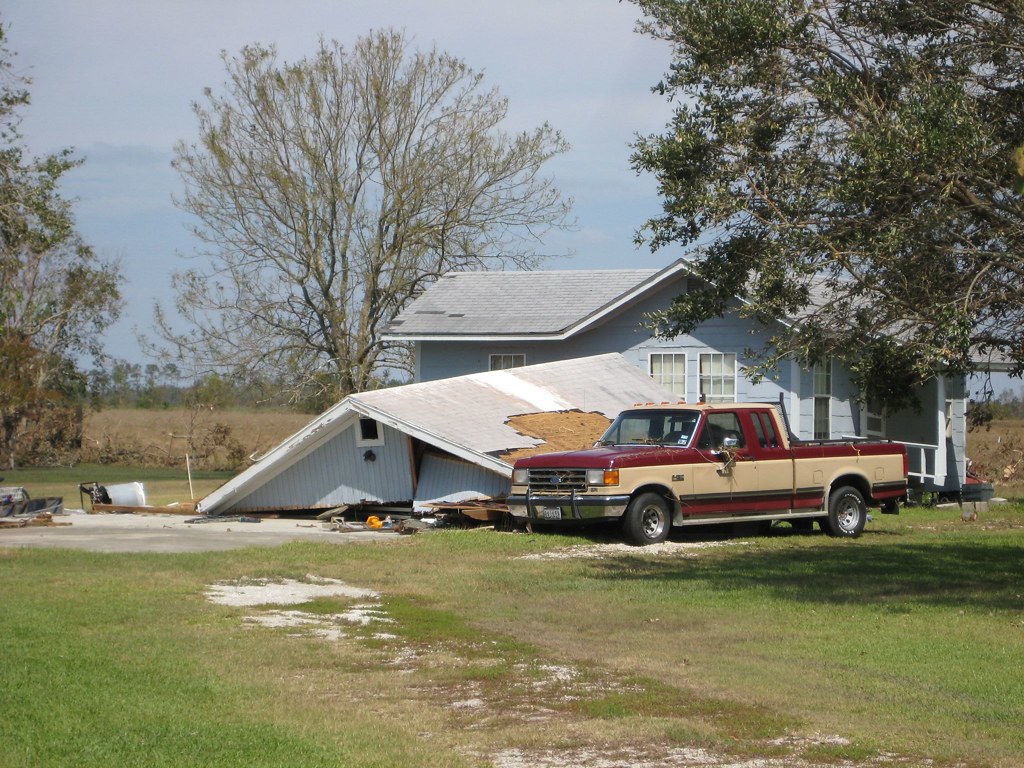 A couple of the homes in the Double Bayou area damaged by either the surge or the winds.
A couple of the homes in the Double Bayou area damaged by either the surge or the winds.We happened upon a family working outside their small farm cleaning up the debris and broken tree limbs scattered about their property. They thanked us for coming out to their part of the county, but they didn't feel comfortable talking on camera about their recovery from the storm. The family's daughter did tell us about what her Uncle Donny went through next door. According to the girl, Uncle Donny stayed in his home to ride out the storm, but as the storm surge moved inland and the waters continued to rise, Uncle Donny was forced to swim out the window and hunker down on the roof. He was rescued the following day by helicopter. We had to find Uncle Donny to hear his story.
We headed over to Uncle Donny's house only to find nobody was home. Uncle Donny is a constable and his patrol car did not survive the storm. It sat in the driveway and though its windows were fogged up, you could see the mud that coated everything inside. We decided to wait for a little while to see if Uncle Donny would show back up at his house. Half an hour later he still wasn't there, so we started to head out. We were stopped by a volunteer firefighter on our way out of town who said he knew Donny and could take us to him. Apparently he was working traffic in the neighboring town of Oak Island. Down the road we headed to Oak Island. We rolled up on the police checkpoint Uncle Donny was supposed to be working. The officer manning the stop told us that Donny had worked the night shift and was now in a shelter in the next county over getting some rest before his next shift.
Running out of time we decided we had to give up on Uncle Donny and get a story in the can. KTRK was broadcasting 24 hours a day without commericial breaks. We needed to get something on the air. Carolina remembered a woman she came across the day before in the town of Smith Point, not too far from where we were. The Britney Wood helped run her family's oyster business and was worried about whether or not the business would survive the storm. Off to Smith Point.
Smith Point is where the road ends, literally. Jeri's Seafood. Just off to the right when you come into town. It took us about 45 minutes to get there. We probably could have shaved off 15 minutes if the cattle weren't blocking the road. Real live cowboys were driving them into a holding area that's fence survived. I digress.
We met up with Britney at her house in Smith Point. We did part of the interview at her house before going back into town to conclude the interview at Jeri's Seafood headquarters. Britney was very concerned for the family business. She figures they employ about 120 people, and if the oyster harvest had been comprimised, they employee's jobs could be in jeopardy. Britney was also feeling some survivor's guilt.
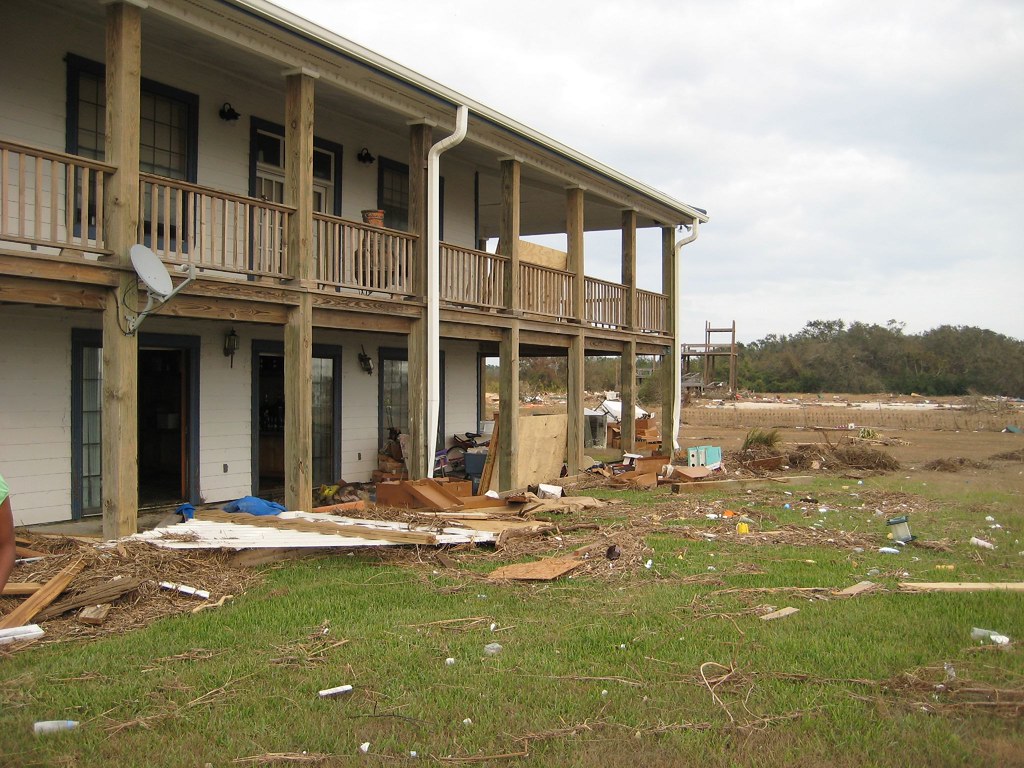 Her waterfront home, as well as her mother's, survived the storm with damage to only the first floor - even though the surge moved right through her house.
Her waterfront home, as well as her mother's, survived the storm with damage to only the first floor - even though the surge moved right through her house.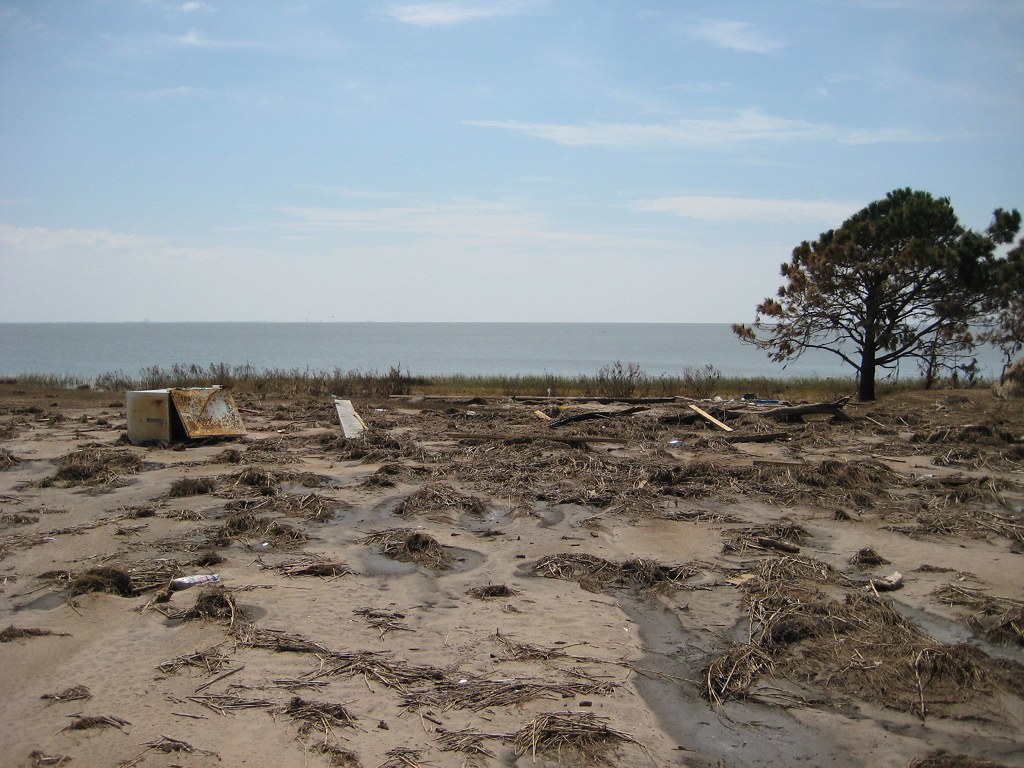
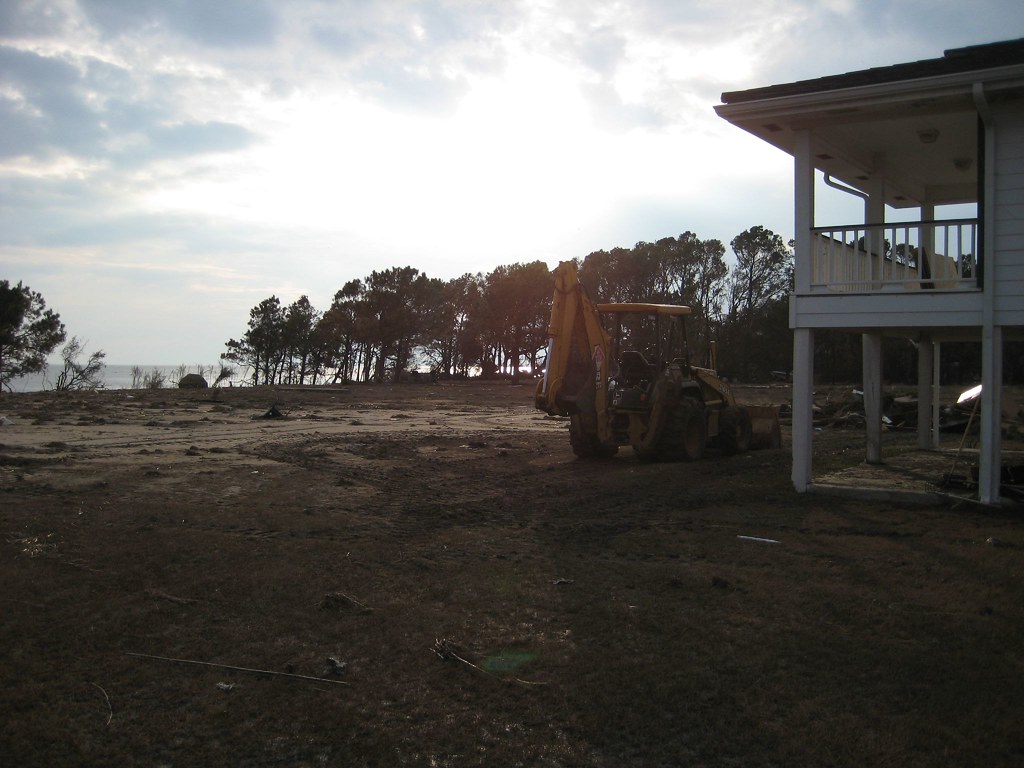 Britney and her mother's yards were littered with the debris from homes miles away across the bay on the Bolivar Peninsula.
Britney and her mother's yards were littered with the debris from homes miles away across the bay on the Bolivar Peninsula. 
 We did start to notice more of the storm's casualties in the smith point area. Two wild hogs laid dead along the road and the number of dead cattle we'd seen was increasing.
We did start to notice more of the storm's casualties in the smith point area. Two wild hogs laid dead along the road and the number of dead cattle we'd seen was increasing. After I'd finished editing the package, it was sent to both KTRK and WABC.
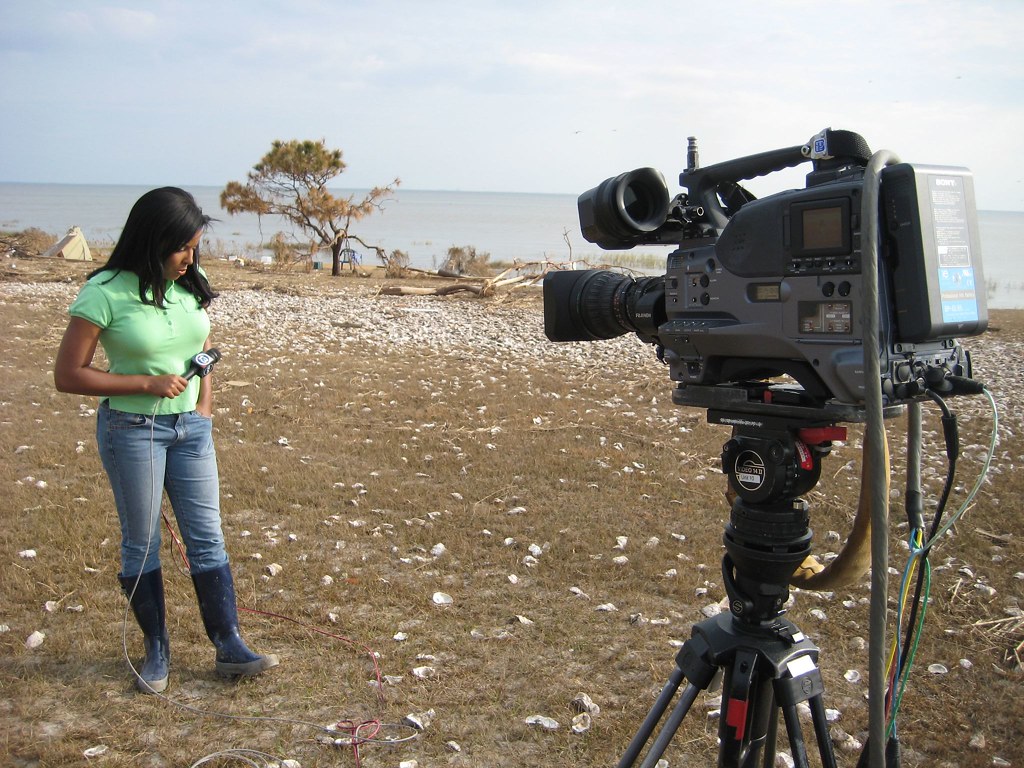
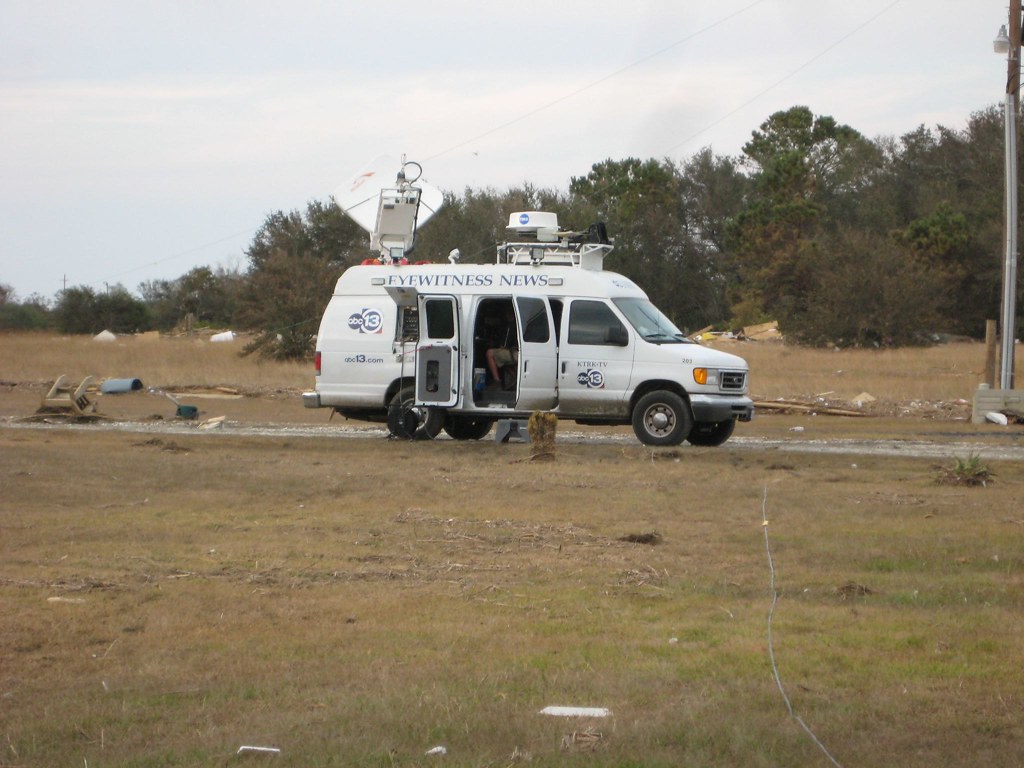
 We did the live shot for WABC and then had about an hour of down time.
We did the live shot for WABC and then had about an hour of down time. 
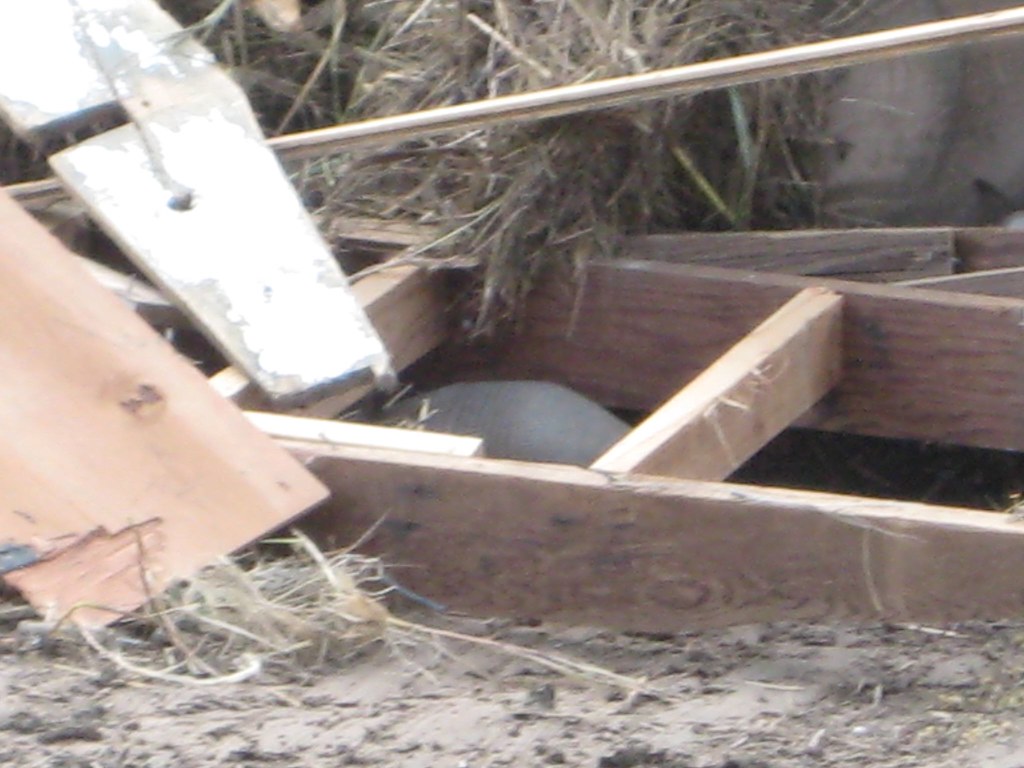 An armadillo stopped by to visit and rummage through the debris scattered about the yard.
An armadillo stopped by to visit and rummage through the debris scattered about the yard.Here is our report from Smith Point.
STANDBY="Loading Windows Media Player components..." TYPE="application/x-oleobject">
WIDTH="192" HEIGHT="190" ShowControls="1" ShowStatusBar="0" ShowDisplay="0" autostart="0">
This post is getting too long. I'll follow up with the rest of my trip soon.
Thanks for watching.
-Billau
*Forgive me for any typos. This post was too long for spell check to work properly.

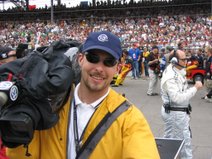
No comments:
Post a Comment